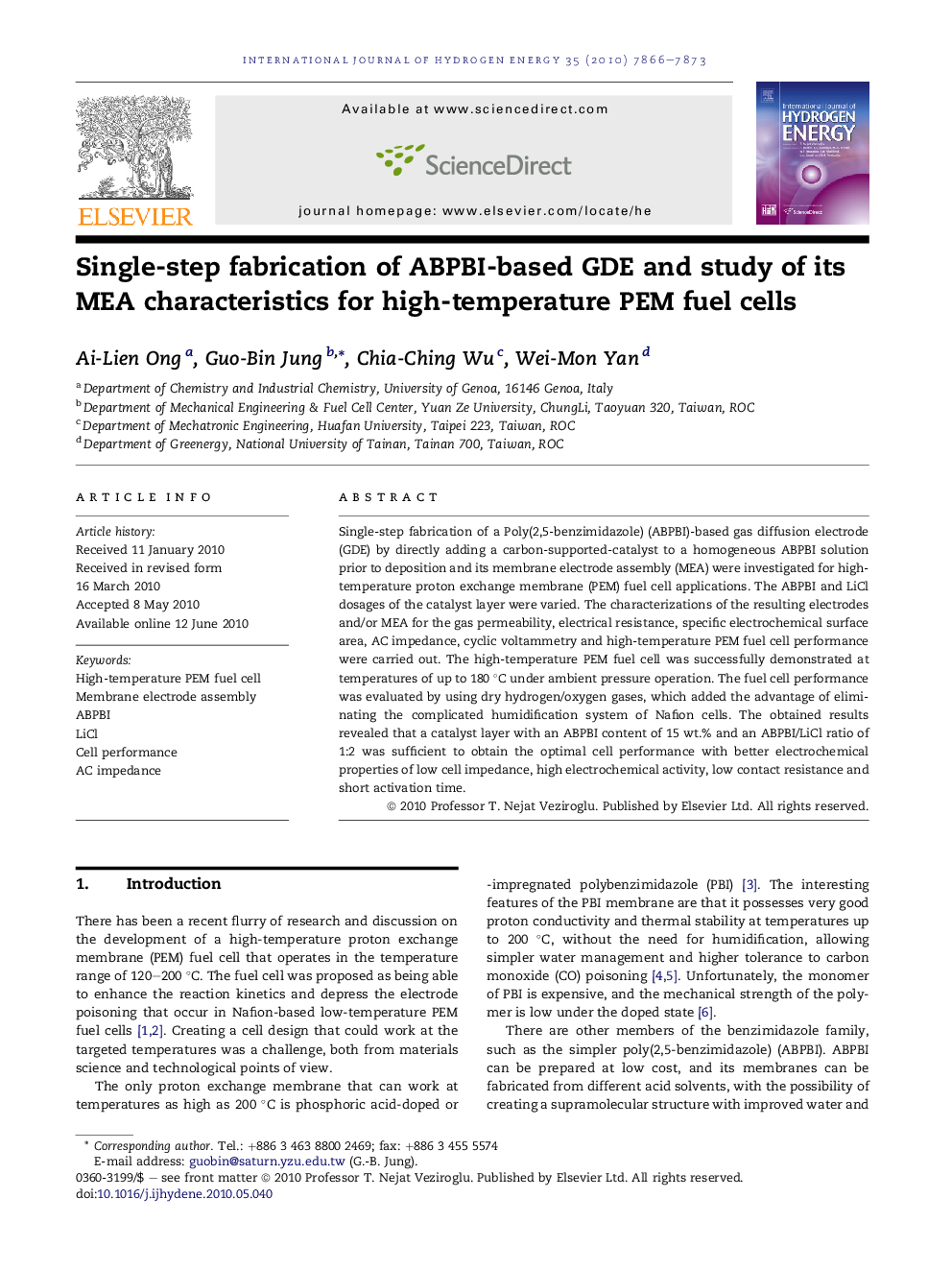| Article ID | Journal | Published Year | Pages | File Type |
|---|---|---|---|---|
| 1277965 | International Journal of Hydrogen Energy | 2010 | 8 Pages |
Single-step fabrication of a Poly(2,5-benzimidazole) (ABPBI)-based gas diffusion electrode (GDE) by directly adding a carbon-supported-catalyst to a homogeneous ABPBI solution prior to deposition and its membrane electrode assembly (MEA) were investigated for high-temperature proton exchange membrane (PEM) fuel cell applications. The ABPBI and LiCl dosages of the catalyst layer were varied. The characterizations of the resulting electrodes and/or MEA for the gas permeability, electrical resistance, specific electrochemical surface area, AC impedance, cyclic voltammetry and high-temperature PEM fuel cell performance were carried out. The high-temperature PEM fuel cell was successfully demonstrated at temperatures of up to 180 °C under ambient pressure operation. The fuel cell performance was evaluated by using dry hydrogen/oxygen gases, which added the advantage of eliminating the complicated humidification system of Nafion cells. The obtained results revealed that a catalyst layer with an ABPBI content of 15 wt.% and an ABPBI/LiCl ratio of 1:2 was sufficient to obtain the optimal cell performance with better electrochemical properties of low cell impedance, high electrochemical activity, low contact resistance and short activation time.
